My coat closet is coming along nicely, and I am hook happy now baby! Seriously, it’s a miracle, my husband’s coat isn’t on the chair anymore but in the coat closet on a hook! *swoon*
Now that I have lots of storage space in my coat closet for the big people, it was time to focus on storage for my little people. Well, and maybe a little more storage for us too…in my house there is no such thing as too much storage.
The question was how to create cubbies that had a traditional touch to match the style of my closet, and optimize openness in a cubby. Happily this DIY flipped shelf design works perfectly for what I wanted. And building them is easy and cheap! At $2 and per bracket, this $12 project (after using leftover wood and paint) was well worth my efforts.
I love these things! Open “cubbies” you build yourself means you aren’t as restricted to what can fit. Large bags, tall coloring books, small bags, they all fit.
My girls gather items for a long trip or for church, from the day before so they can grab and go first thing in the morning! That makes this smart closet a time saver, and teacher of punctuality.
You know me, always salvaging in order to have materials to create. Well, remember those shelves off my daughters dresser? The drawers got a makeover, and rather than throw away the upper shelves…typical me, I salvaged the wood from the two shelves. Well, you have to get wood where you can when you have no money. *chuckle* I’m glad I saved them! It was the perfect size for creating these open cubbies. One salvaged shelf went toward creating two cubbies, and one will be used as a shoe shelf in my closet makeover.
How to Build DIY Flipped Shelves
I purchased these wooden keyhole hinge brackets at Home Depot for $2 a piece. Be sure to purchase brackets that have external keyhole hardware so it can be flipped. The steps are easy enough, all you are really doing is attaching brackets to a piece of wood cut to the desired size…
2. Unscrew and flip the keyhole so the shelves are still mountable when the bracket is flipped upside down.
3. Attach your brackets to your shelf bottom: Start by using wood glue on the bottom of your brackets, place them in position on your bottom shelf and allow them dry in place. (Prop up your brackets using heavy books or a wrapped brick to hold them in place while the glue dries). Next drill pilot holes then fasten with wood screws.
4. Use wood filler to tidy up any connecting holes, and to hide your screws from underneath. Paint and seal with a polyurethane finishing product.
5. Mount on the wall. It’s ready for use!

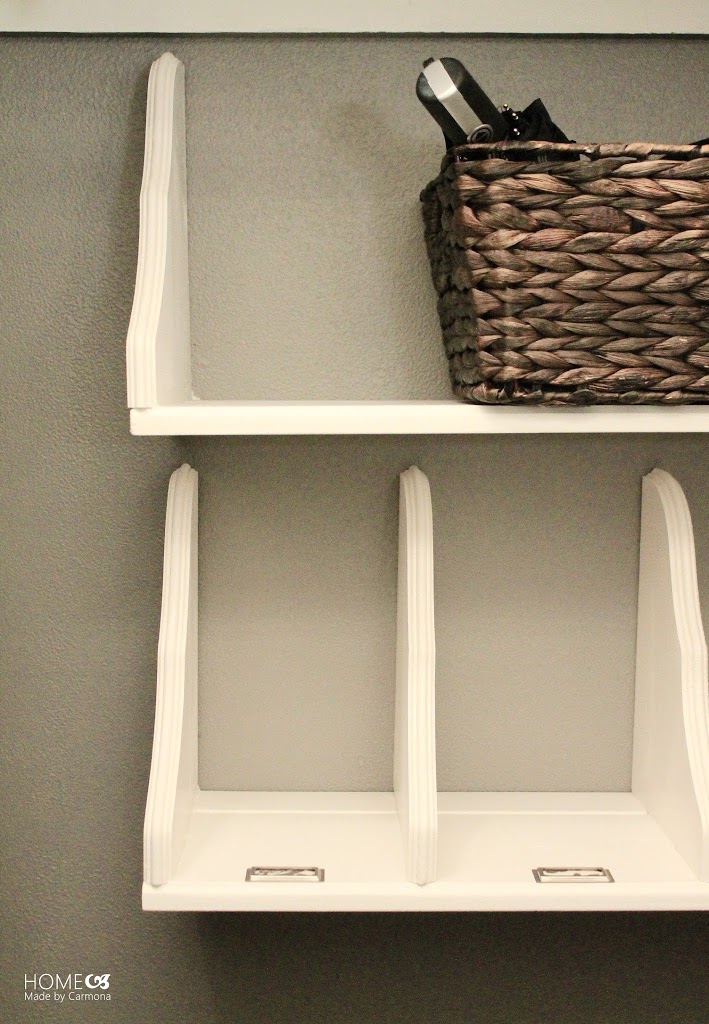
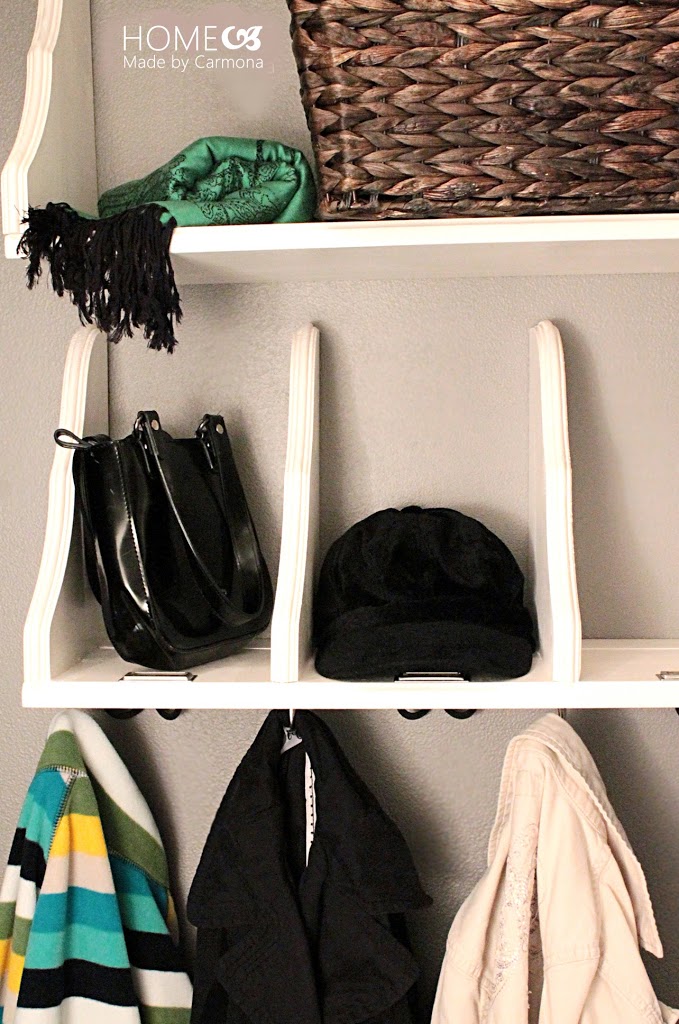

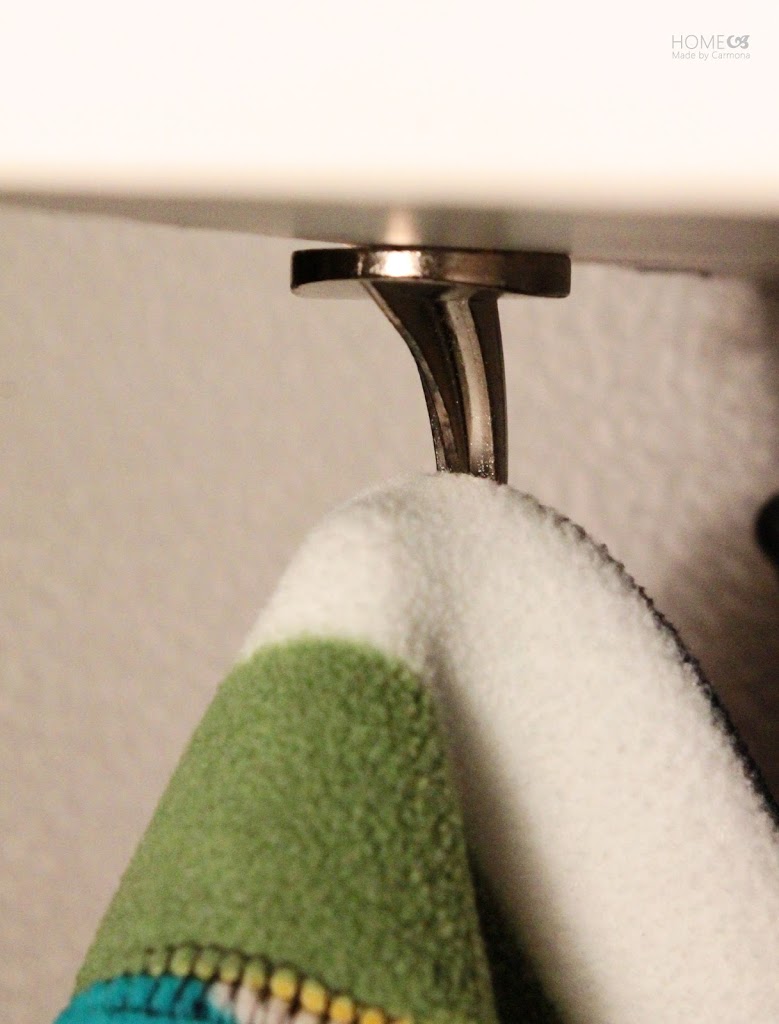
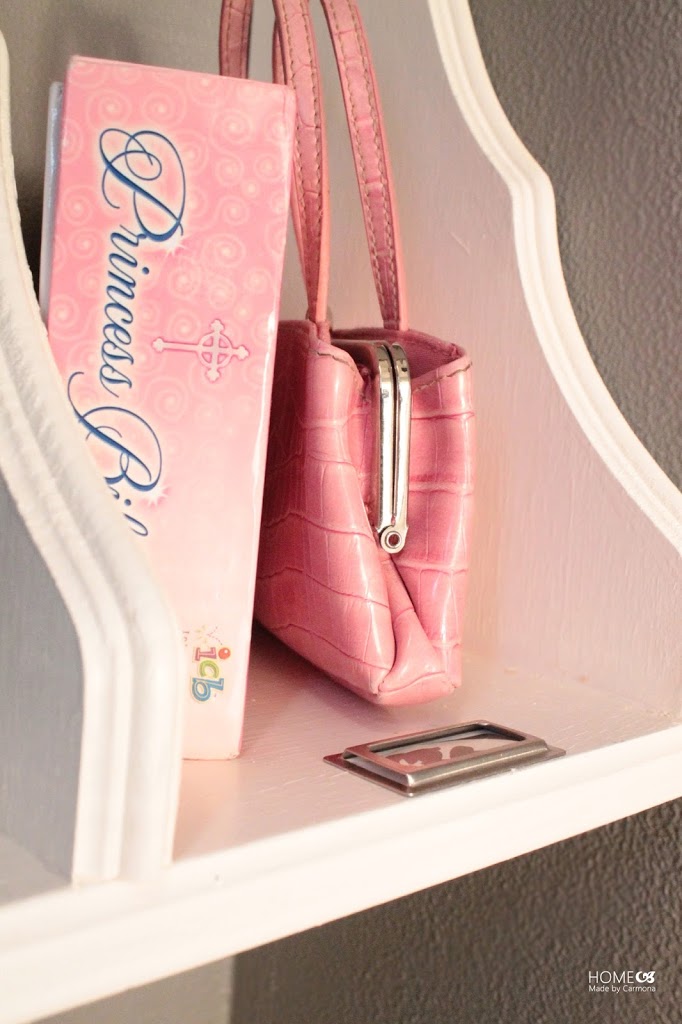
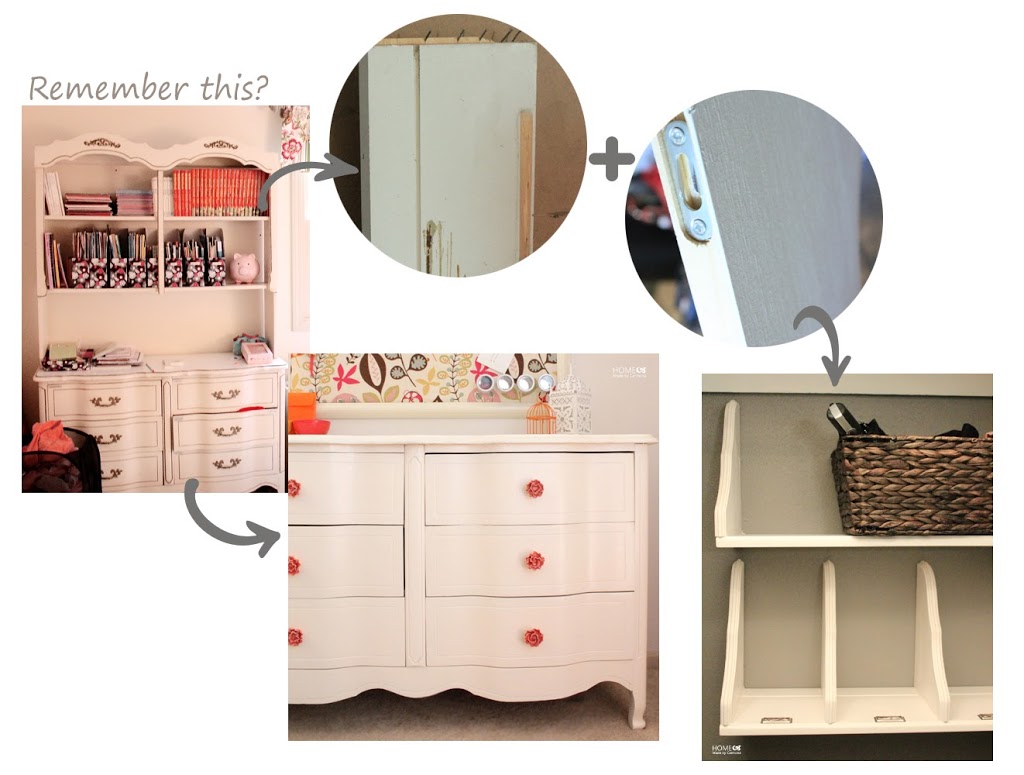
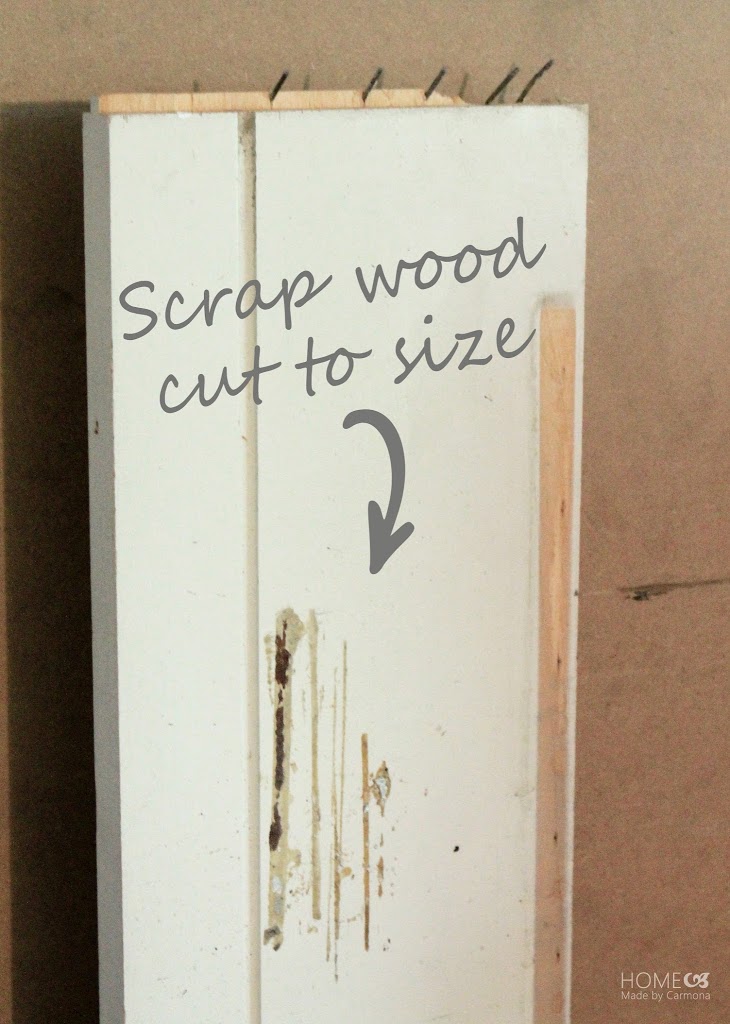
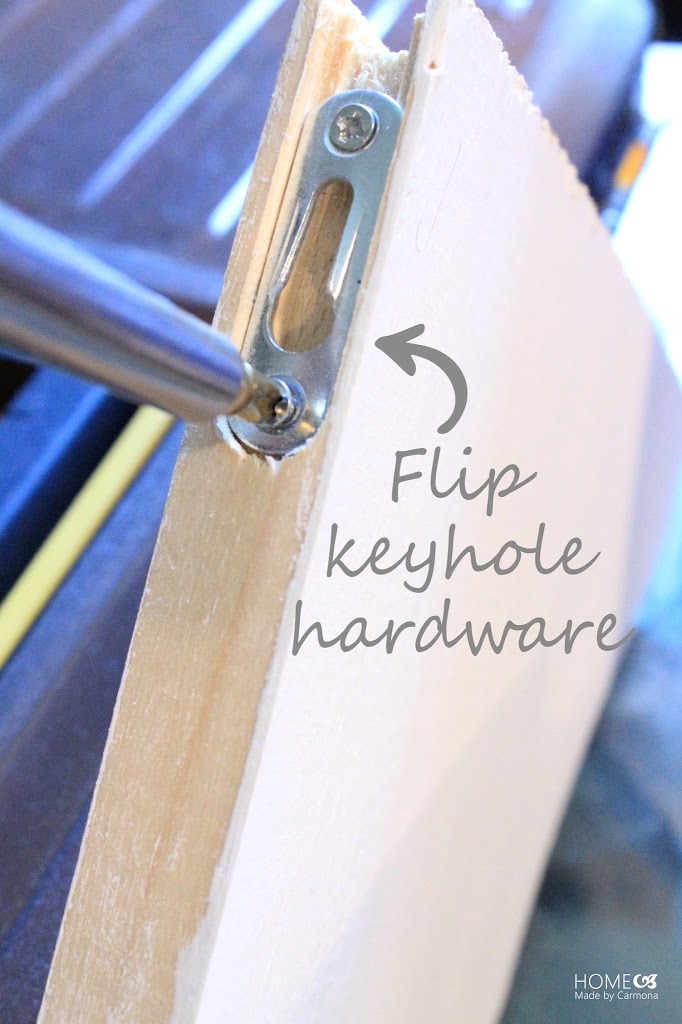
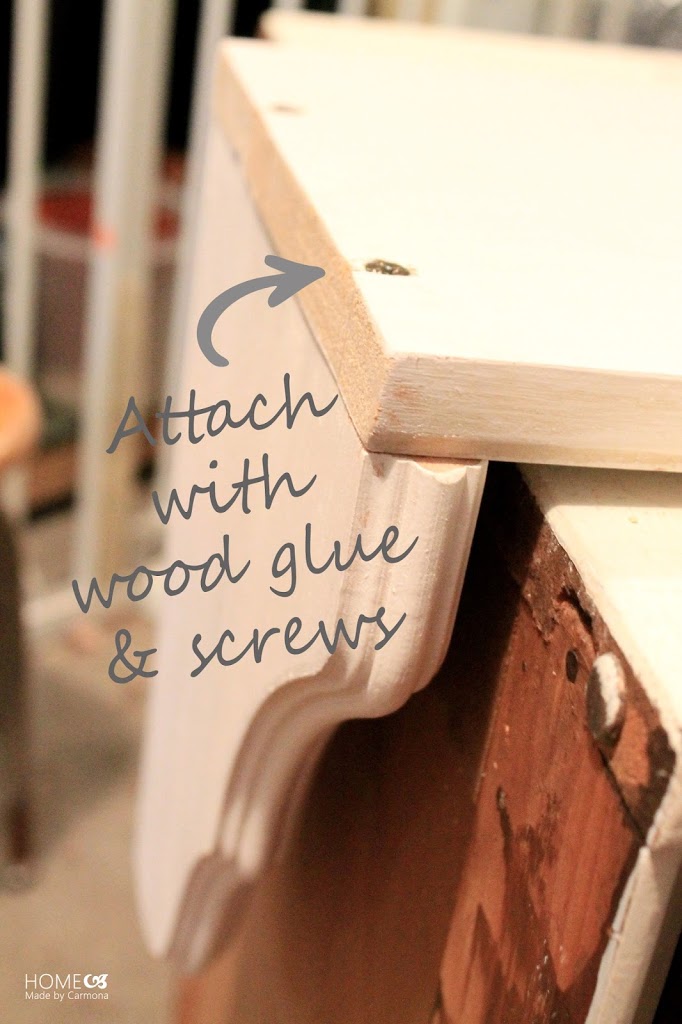

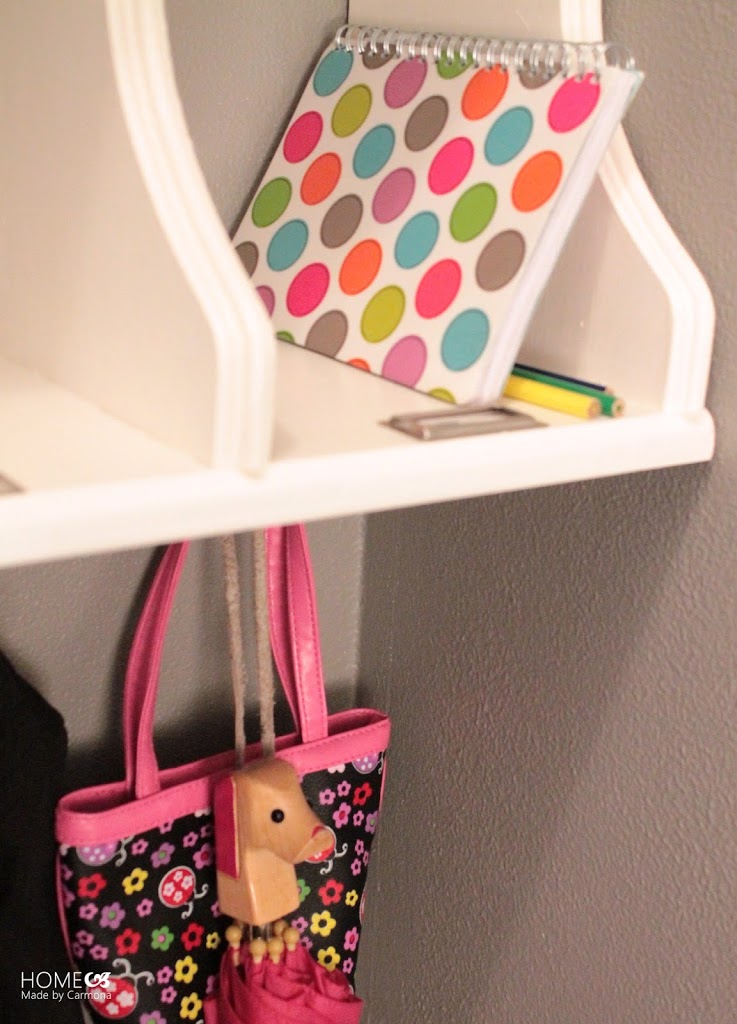

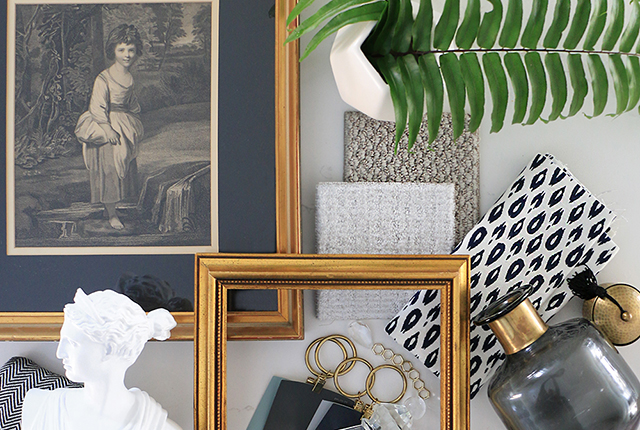
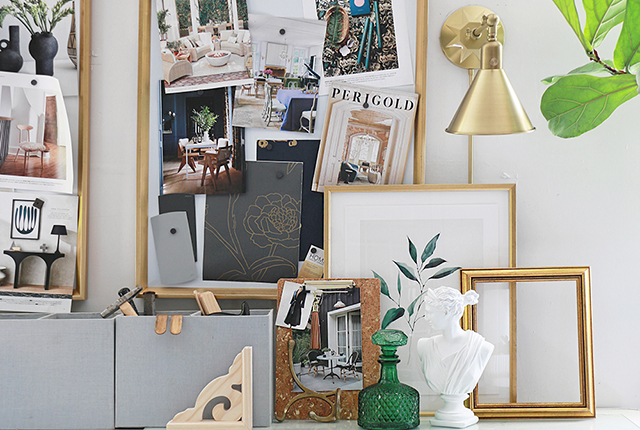
This is genius, exactly what I need. Thank you!
That’s a nice idea 🙂
Melanie ~ http://www.iheartsharingthings.blogspot.fr